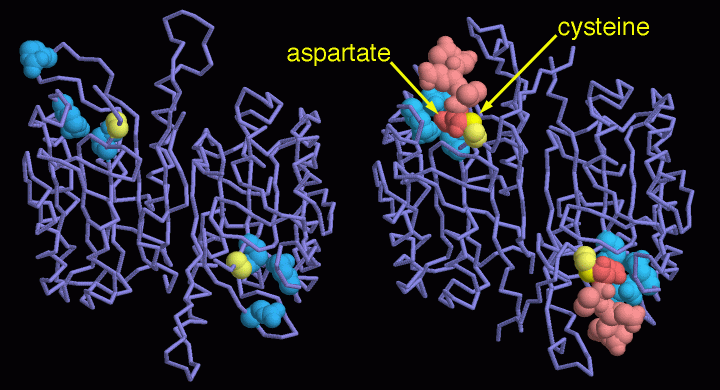|
Inhaltsübersicht | Nanomaschinen | Moleküle | Programme | Kurse | Fun | Links |
||
| > |
Caspases

Exploring the Structure
As you might imagine, caspases are dangerous enzymes to have around, so they are created in the form of inactive proenzymes. The structure on the left, PDB entry 1k88, shows one example: procaspase-7. The active site contains a reactive cysteine, shown in yellow, and three basic amino acids (two arginines and a glutamate, shown in blue) that recognize the aspartate in the protein that is cleaved. As you can see, the procaspase is floppy and these four key amino acids are not assembled into a tight active site. When the caspase is activated, by making a few strategic cuts in the protein chain, the active site can form the proper conformation. The structure on the right, PDB entry 1f1j, shows active caspase-7 with a short protein chain bound in the active site. The structure catches the enzyme in the middle of its reaction. The cysteine is bound to the target protein chain, and the aspartate is nestled inside the three basic amino acids.
This picture was created using RasMol. You can create similar pictures by clicking on the accession codes here and picking one of the options under View Structure.
A list of all PDB entries related to Caspases as of August, 2004 is available here. For more information on caspases, click here.
This picture was created using RasMol. You can create similar pictures by clicking on the accession codes here and picking one of the options under View Structure.
A list of all PDB entries related to Caspases as of August, 2004 is available here. For more information on caspases, click here.
Next: Interaktive 3D-Animation
Previous: Helpers in Apoptosis
Last changed by: A.Honegger,